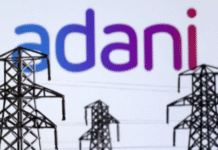Cost of dredging, linking with Jamuna to go up by Tk 600cr

Filth being pumped out of the Turag river near a BIWTA land station in Ashulia on the outskirts of Dhaka city yesterday afternoon. The Turag is part of the 162-kilometre waterway between a dirty Buriganga and a clean Jamuna. About 6.5km of the Turag has been dredged on a limited scale under a project to connect the Buriganga with the Jamuna.
The government has not been able to ensure enough finance to revive the polluted Buriganga river by connecting it with the Jamuna despite Prime Minister Sheikh Hasina’s high sounding political commitment, resulting in an abysmal 5-6 percent progress of the project in the last two years.
Officials say only Tk 100 crore was released in the last two years against the total budget of Tk 944 crore. The project was supposed to be completed in June next year. Now the deadline has been extended by another year.
The delay inflicts a double blow to the project as its cost has shot up to around Tk 1,500 crore due mainly to an increase in per cubic metre dredging cost from Tk 126 to Tk 242.
The project involves the dredging of 162 kilometres of river way between a dirty Buriganga and a clean Jamuna. This includes vital dredging of 23 km of the Pungli river, which has become almost dead after the Bangabandhu Bridge was constructed.
In the past the Pungli served as a bridge between the Buriganga and the Jamuna. Reviving this river would have a lot of positive impact on agriculture and livelihood.
Other than dredging, the project would build a water regulator and fish pass system to help migration of the fish.
Senior Secretary Sheikh Altaf Ali of the water resources ministry said funding of a project was not in their hands irrespective of the priorities attached to it. Many other ministries got higher allocation, he added.
Upon assuming office in 2009, the prime minister decided to initiate this project to bring fresh water to the Buriganga during the lean period and increase the flow of the river so that it can wash away the pollutants from the stagnant water. Several ministers dealing with river issues also made several commitments to change the situation within the tenure of this government.
The Buriganga and other rivers around Dhaka, including the Turag, the Bangshi, Tongi Khal, the Balu and the Shitalakkhya, have become highly polluted as the authorities have been indiscriminately dumping almost all the industrial and household waste into these rivers.
Among them, the Buriganga is the most polluted, having zero oxygen level in its waters for nine months in a year due to a dumping of toxic tannery waste from Hazaribagh containing around 300 chemicals including chromium.
Under the project, about 7.11 crore cubic metres of waste need to be removed from the 162-km waterway. A total of 5.53 crore cubic metres of earth spoils would be removed manually and 1.57 crore cubic metres will be removed by dredging.
But only 23 km have so far been dredged in Pungli between Alenga and Salehpur and 6.5 km in the Turag.
Additional Chief Engineer Md Amanullah, also the project director, said the government this year had allocated Tk 40 crore, half of which would be spent to repay last year’s dues.
“We need to excavate 23 km to reconnect the Pungli and the Jamuna which alone needs around Tk 100 crore this year. I hope they will increase the fund in the revised budget,” said Amanullah.
Chief Engineer of Bangladesh Water Development Board (BWDB) Sunil Baran Deb Roy, who served as the project director till February, is unsure when the project would end.
Sunil claimed the project made around 8 percent progress. But according to a review report of the Annual Development Programme (ADP) in March, only 2.66 percent progress was made till February.
In 2009 a project to clean the river launched by the shipping ministry failed completely. It removed 300 tonnes of garbage from the Buriganga bed without closing hundreds of waste disposal points and conducted awareness campaign at a cost of around Tk 50 crore.
Besides, the monitoring and enforcement wing of the Department of Environment conducted drives in several dyeing industries in different industrial clusters around the Dhaka city.
Only a few hundred industries have set up Effluent Treatment Plants (ETP) in their installations, but most of them have left those unused. A World Bank study showed in 2006 that the number of different industries dumping waste in and around the city would not be fewer than 7,000 units.
Ironically, the government’s cleaning efforts and dumping waste have been going on side by side.
The Dhaka Water Supply Authority (Wasa) alone dumps 25,000 cubic metres of solid waste into the rivers every day. A few hundred launches and engine trawlers also dump engine oil into the rivers.
“Even when the project would be completed, it would not help much because the government could not stop the pollution sources. It was necessary to stop the pollution sources first,” said a top hydrologist.
“It is going to be a waste of money if the government cannot stop such pollution,” he said requesting anonymity.
Dhaka commenced its journey as the capital of Subah Bangala in the Mughal era 400 years ago. The city still provides an extensive network of inland waterways all over Bangladesh, particularly within the southern districts. Hundreds of launches and 41,000 engine boats ply the Buriganga every day to transport goods and passengers.
Source: The Daily Star









